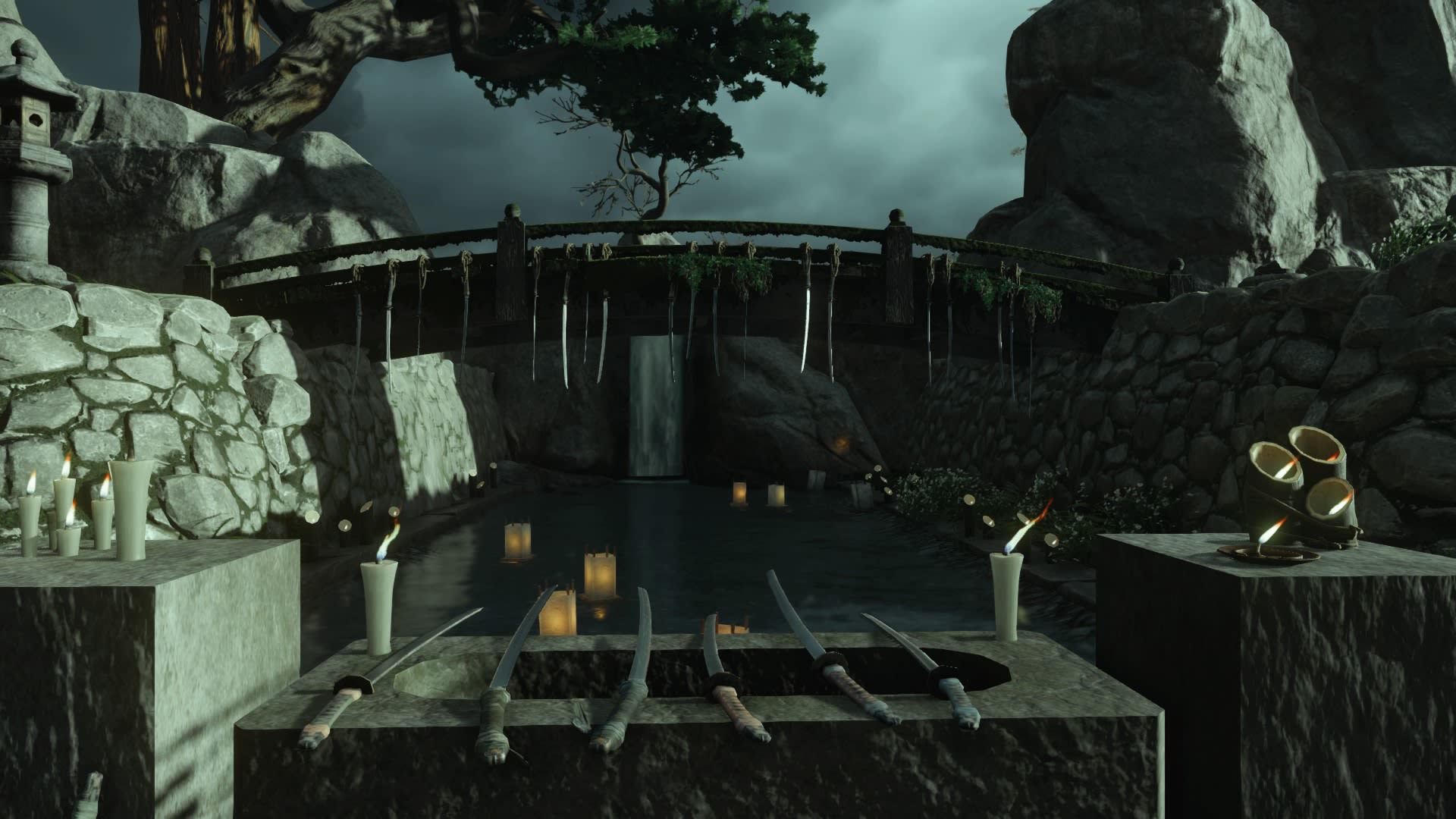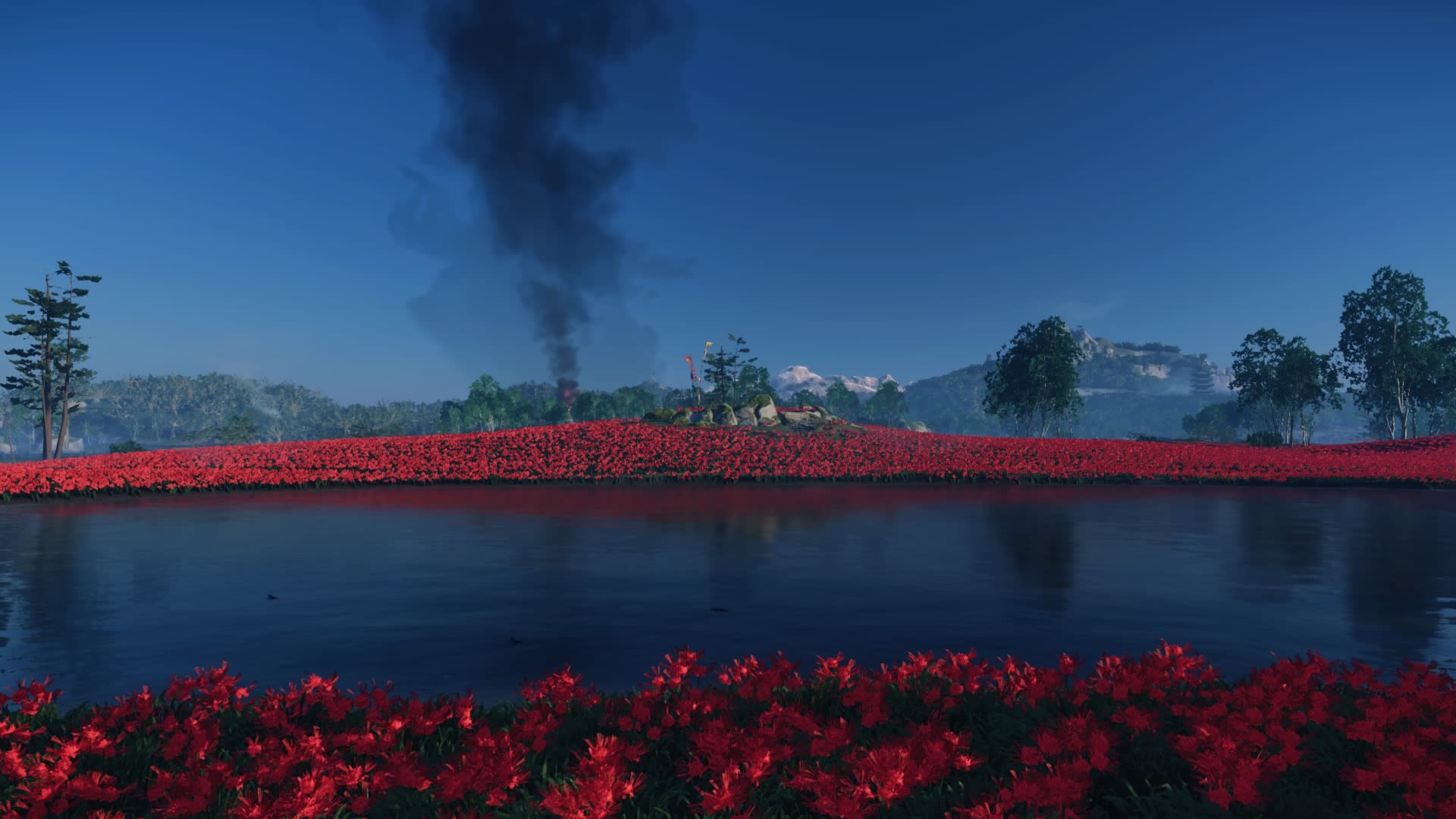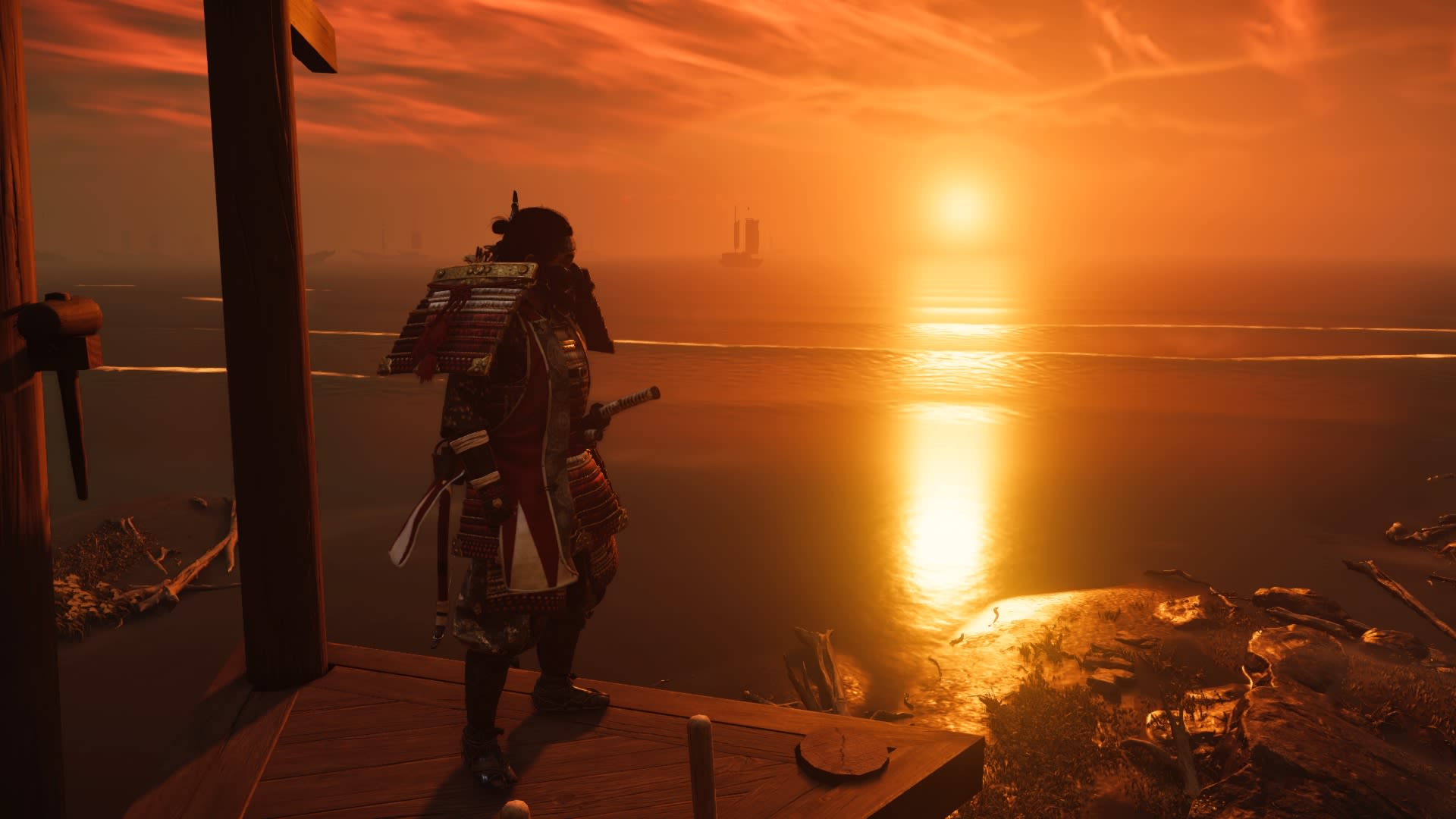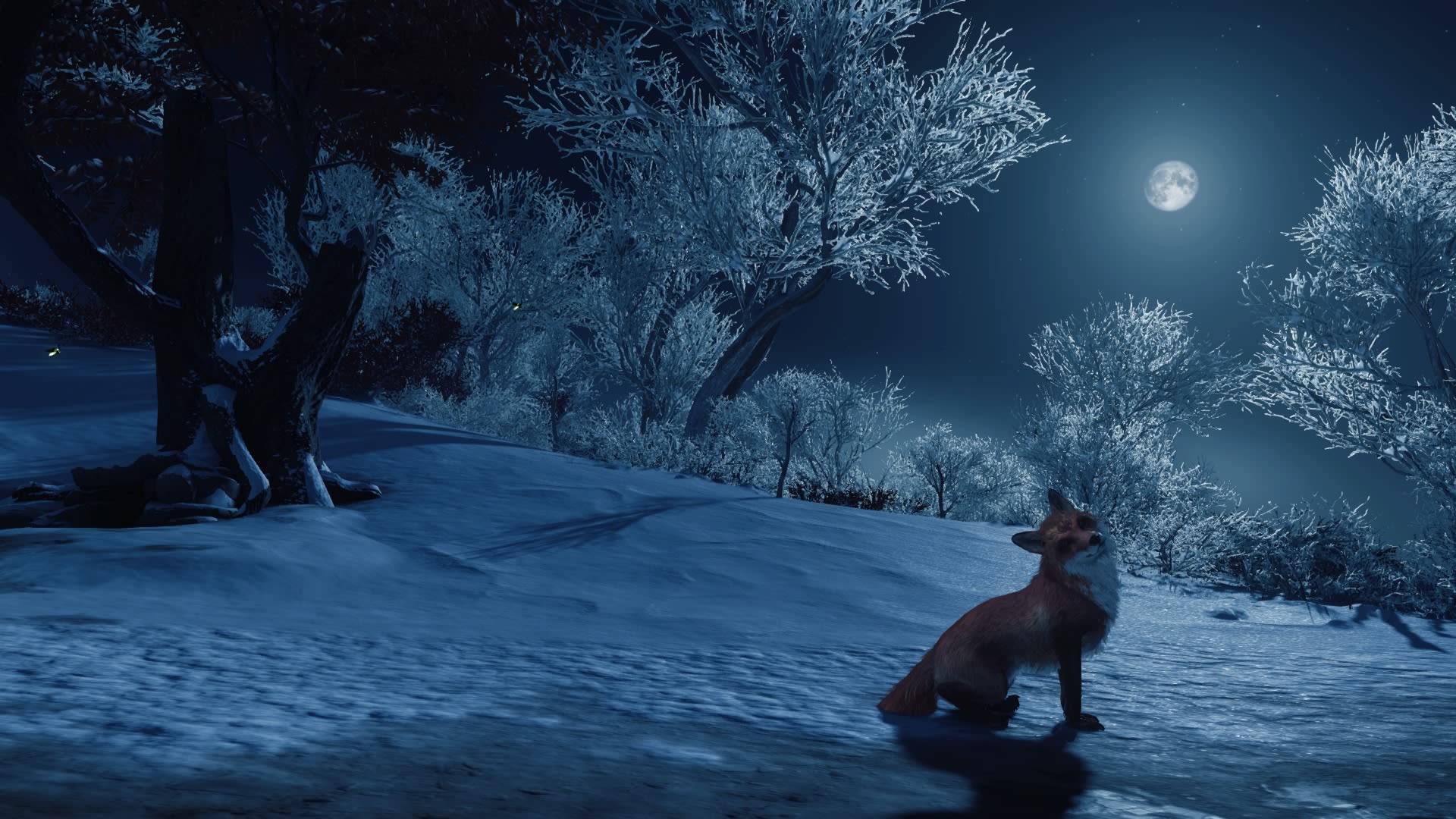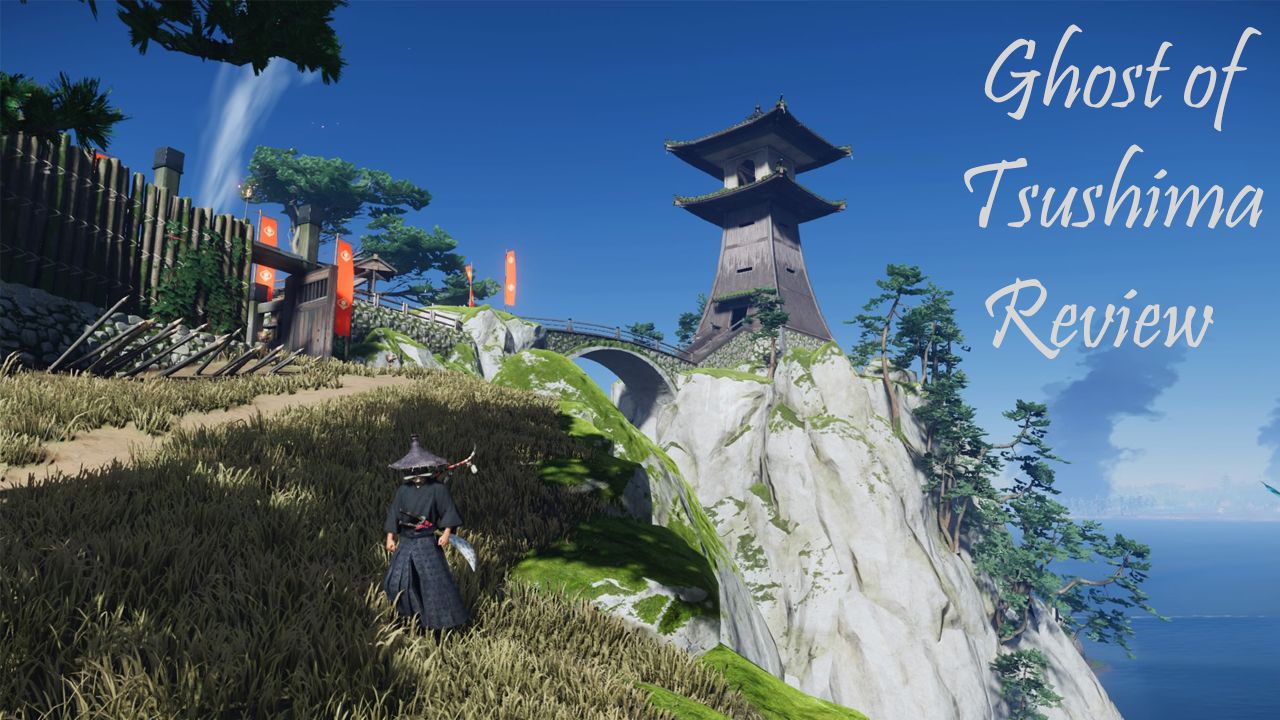
When I first fired up Ghost of Tsushima, the newest game from Sucker Punch, I wasn’t quite sure what to expect. Even though I’d waited until a couple of days after its release to buy it, taking in a few reviews in order to try and ensure that it really was a game that might be up my alley, I still delved into samurai-era Japan (probably not the correct historical terminology) fairly blind, with only the vague notion that my experience would be open-worldy and involve some cool swords.
Perhaps I’m too cautious when it comes to new IPs, even when they come from studios with a good track record in terms of producing games that I’ve enjoyed, as Sucker Punch, the studio behind the Infamous series, certainly are. On the other hand, Ghost of Tsushima is very different to Sucker Punch’s previous work in terms of both setting, ditching the likes of the fairly modern/futuristic urban cities of the Infamous series for the historically-inspired and naturalistic environment of feudal Japan and gameplay, switching out crazy superpowers for an array of swords, bows and early explosives. This kind of new challenge can be difficult for studios to get right first time, especially when the game is released several months into a global pandemic. However, Sucker Punch have largely managed to pull it off pretty well.
One of the first things that you’ll notice about Ghost of Tsushima when you jump into it is just how good it looks graphically. From the opening moment of the game, when you are flung head first into a ferocious battle between a group of samurai and an army of mongol invaders, with flaming arrows flying over the bloody chaos that you, as a samurai named Jin Sakai, have to wade through, to the beautifully picturesque and often peaceful landscape of the island of Tsushima, which you’re free to explore once the game really gets going, it really feels like it’s getting the best out of current generation hardware.
However, one does have to hope that this didn’t come at the cost of massive crunch for the developers working on the game, like it did for the last game that made me feel like it was pushing performance boundaries, Rockstar’s Red Dead Redemption 2. That said, assuming it didn’t take years off of someone’s life to render, Ghost of Tsushima’s world is one which almost makes the game worth checking out all on its own. Whether you’re tracking an animal through a dense bamboo forest at night, meditating in the middle of a meadow of crimson lilies or riding across a frozen lake in the middle of a snowy wasteland, it’s very easy to feel immersed as you journey through the range of diverse biomes that make up the numerous prefectures within Tsushima’s three regions.
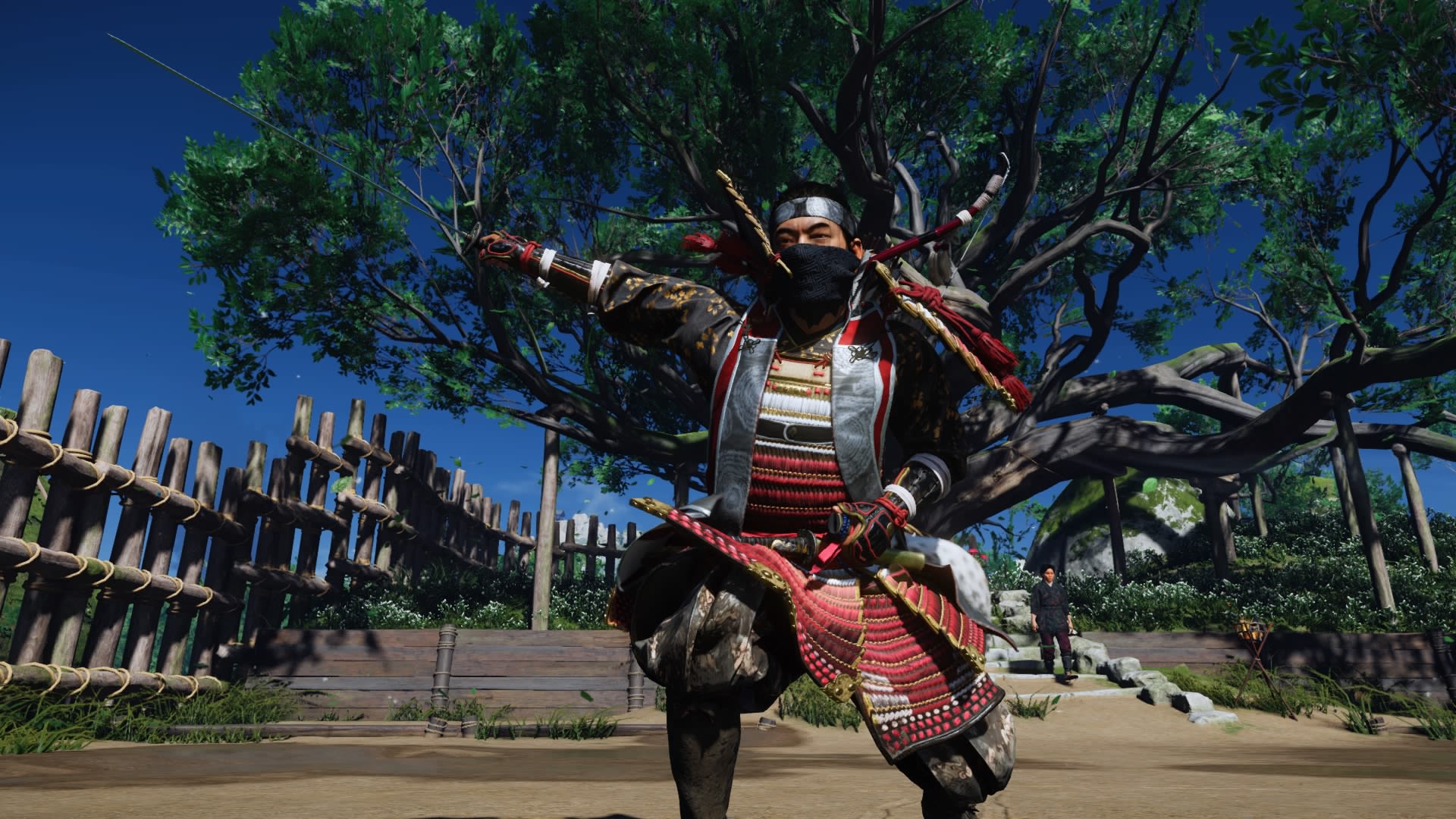

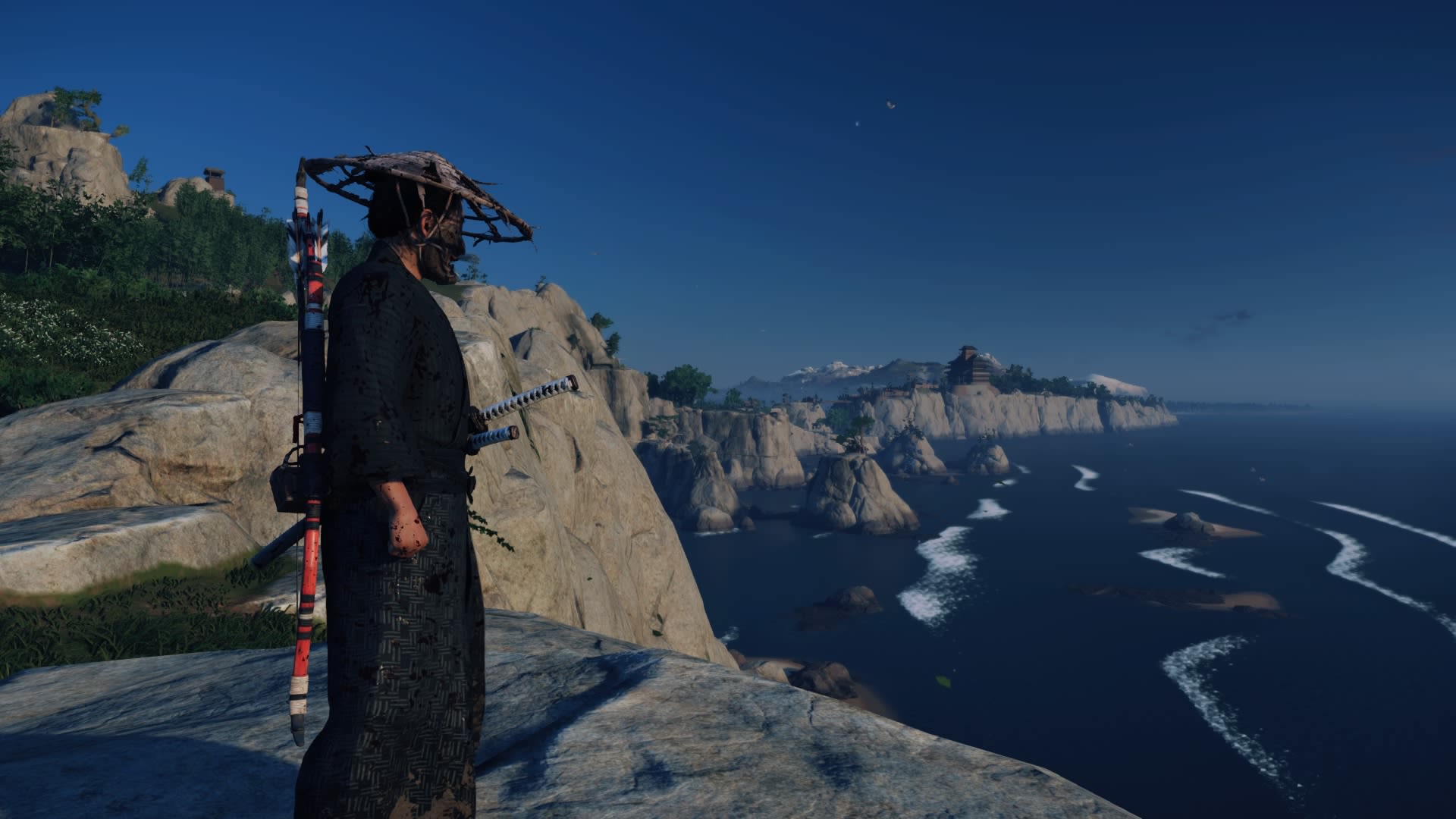
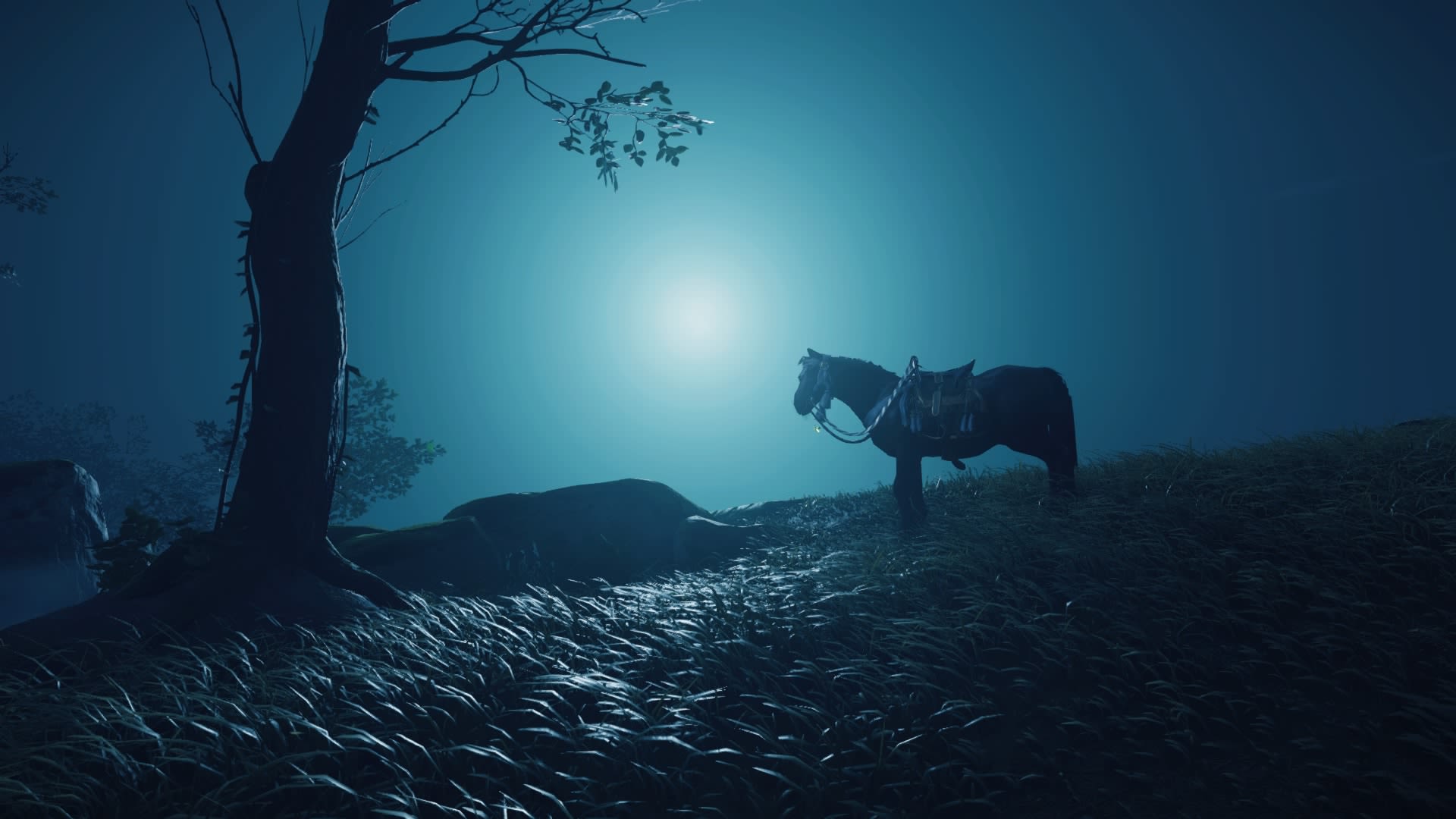
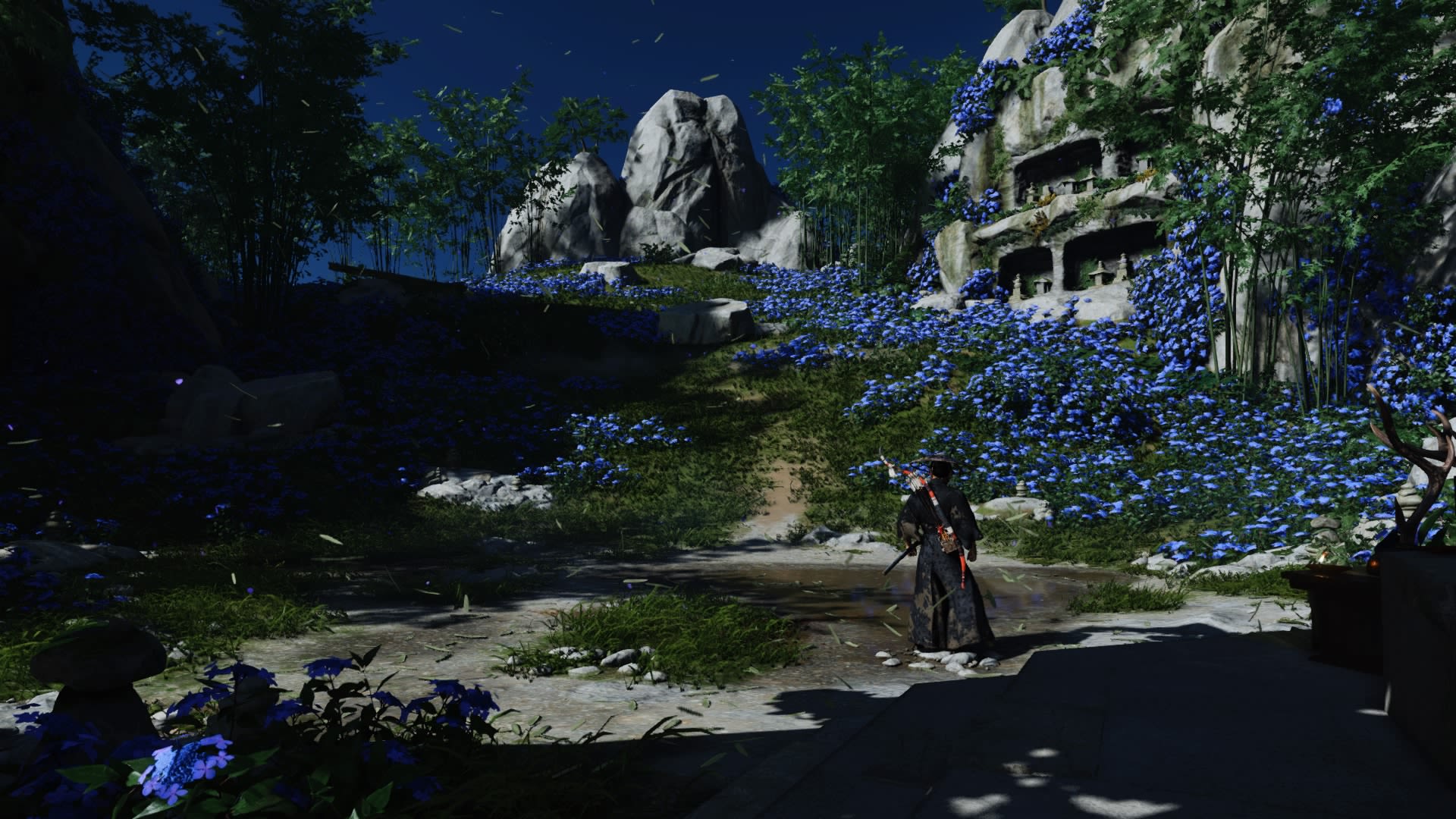
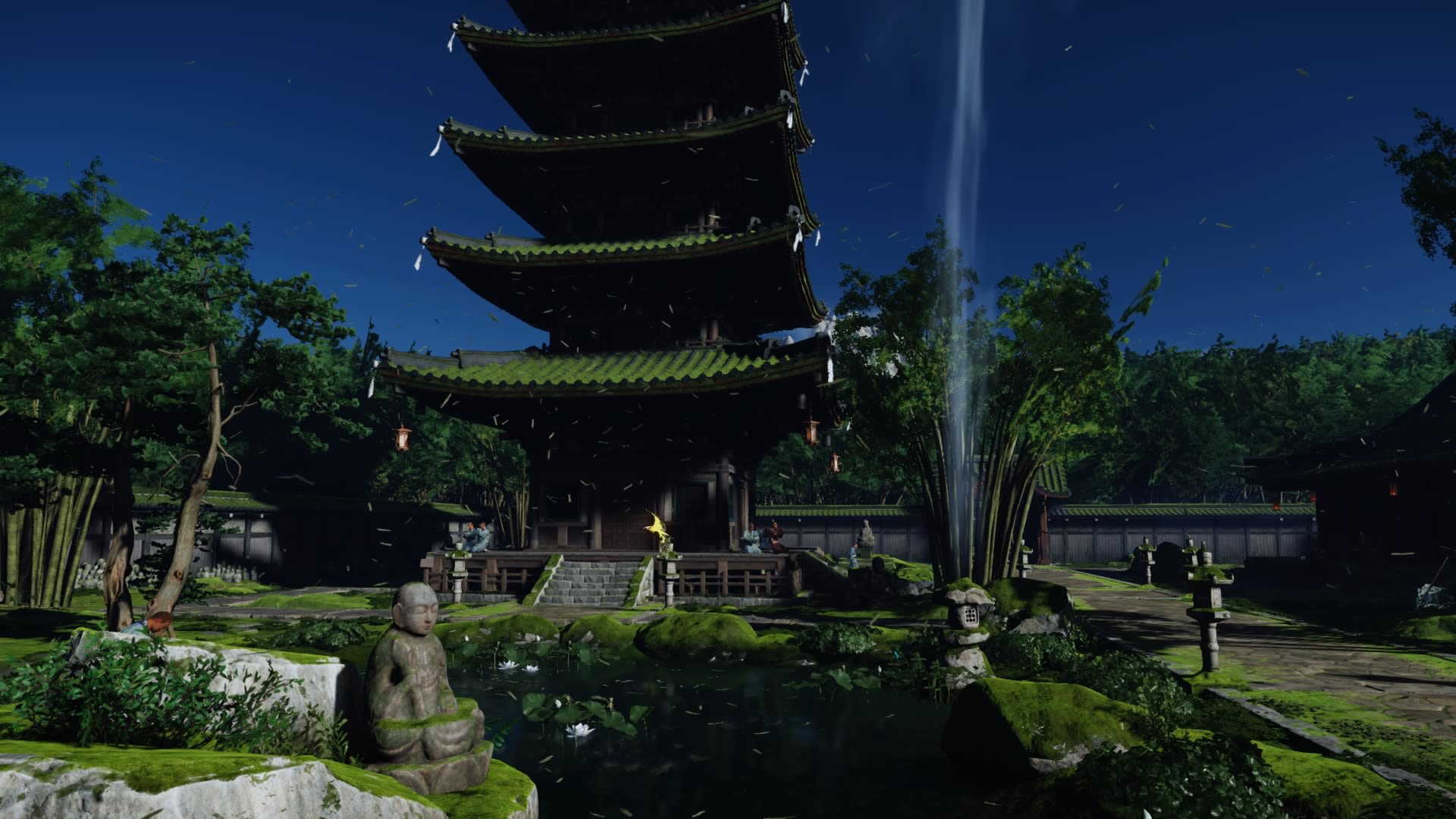
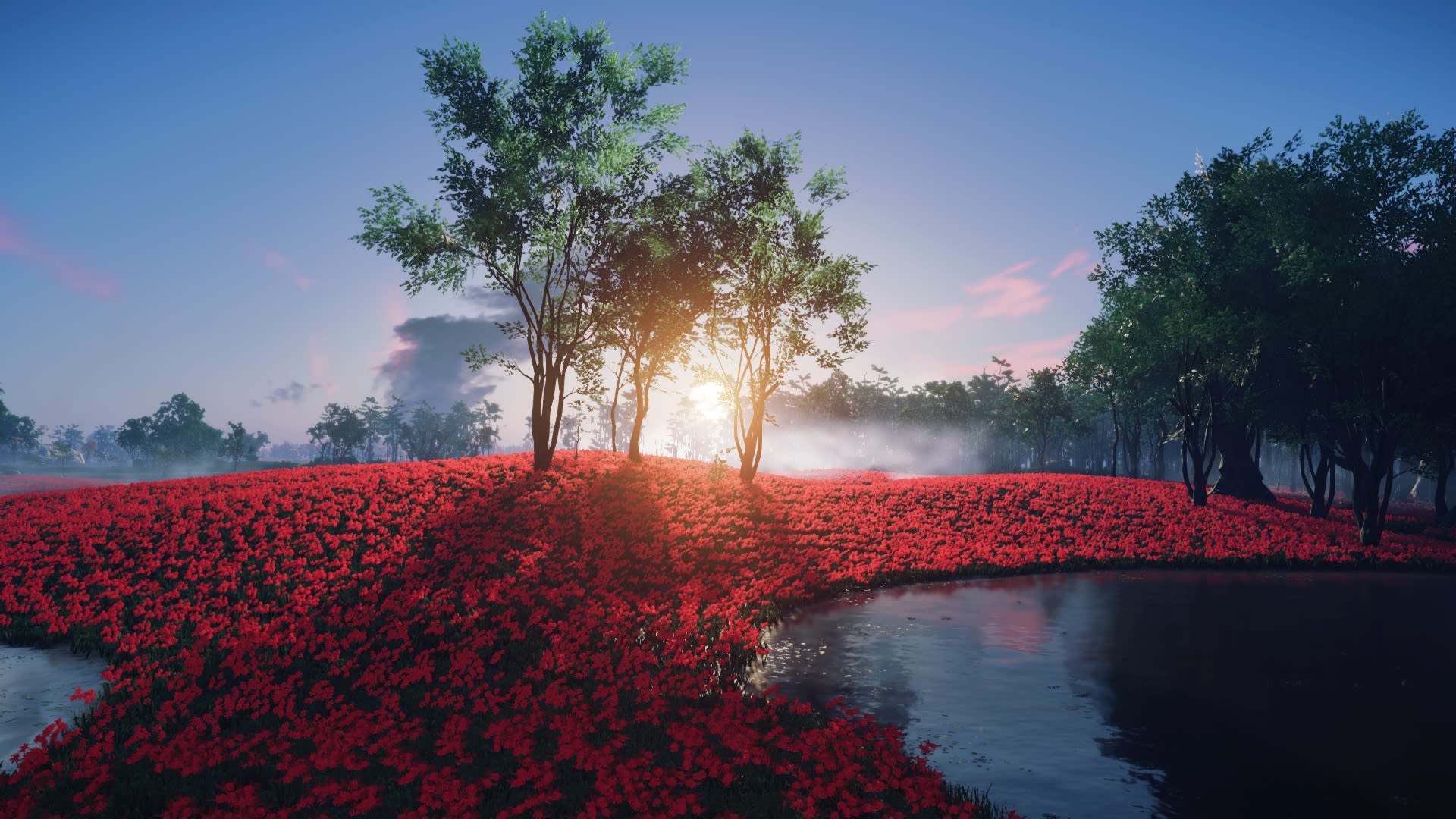





However, despite its beauty, during the course of the game, the island of Tsushima serves as the setting for a brutal war, between the aforementioned mongol invaders and its native Japanese residents. Having defeated the island’s samurai protectors, lead by Jin’s uncle, Lord Shimura, in the battle that begins the game, the mongol invasion, lead by the ominous figure of Khotun Khan, revealed to be a relative of Genghis Khan, has progressed quickly. By the time Jin recovers from being injured at the battle and begins his quest to liberate his home, the mongols have spread across the entire southern region of the island, taking over a mass of strongholds and farms.
Jin, naturally, sets off to gradually re-take these locations and to recruit a cast of allies to help him to free his uncle, who is being held captive by the Khan at a fort called Castle Kaneda. Once this is done, Lord Shimura is freed, but the Khan somehow escapes and flees north, setting up the chase that spans the rest of the game’s main story. However, it’s the freeing of Lord Shimura that sets off the conflict that really shapes the experience the game offers, framing its gameplay and giving it its name.
You see, Lord Shimura is a bit of an old school kind of samurai, believing strongly in the notions of honour and defeating the enemy in a straight-up battle, rather than engaging in deception or trickery. Jin, on the other hand, even though he has the option to fight most of his opponents like a traditional samurai, also has to use an array of more stealthy and dishonourable tactics to defeat the mongols, largely because they usually outnumber him about ten to one. This is what shapes the game’s combat system, with it offering a dichotomy in its ways to take out Jin’s enemies.
If you want to do things honourably, you can begin each fight with a standoff, a mechanic the game offers which puts you into a one on one duel, almost wild west style, with the opposing group’s best swordsman, allowing you to kill them in one stroke if you react at the right time, then launch into full combat with the rest, utilising an array of techniques with your katana and your bow. Or, you can do things in the way that earns Jin his nickname, the Ghost of Tsushima, by sneakily infiltrating camps and taking out your opponents without them ever realising you’re there, with well-timed throat-slitting assassinations, a-la an Assassin’s Creed or Farcry game, poisoned blow darts and an array of ways to create distractions. Either of these approaches can lead to hours of fun just doing something as simple as cleaning out bandit camps, which certainly marks the game’s combat out as one of its key strong points.
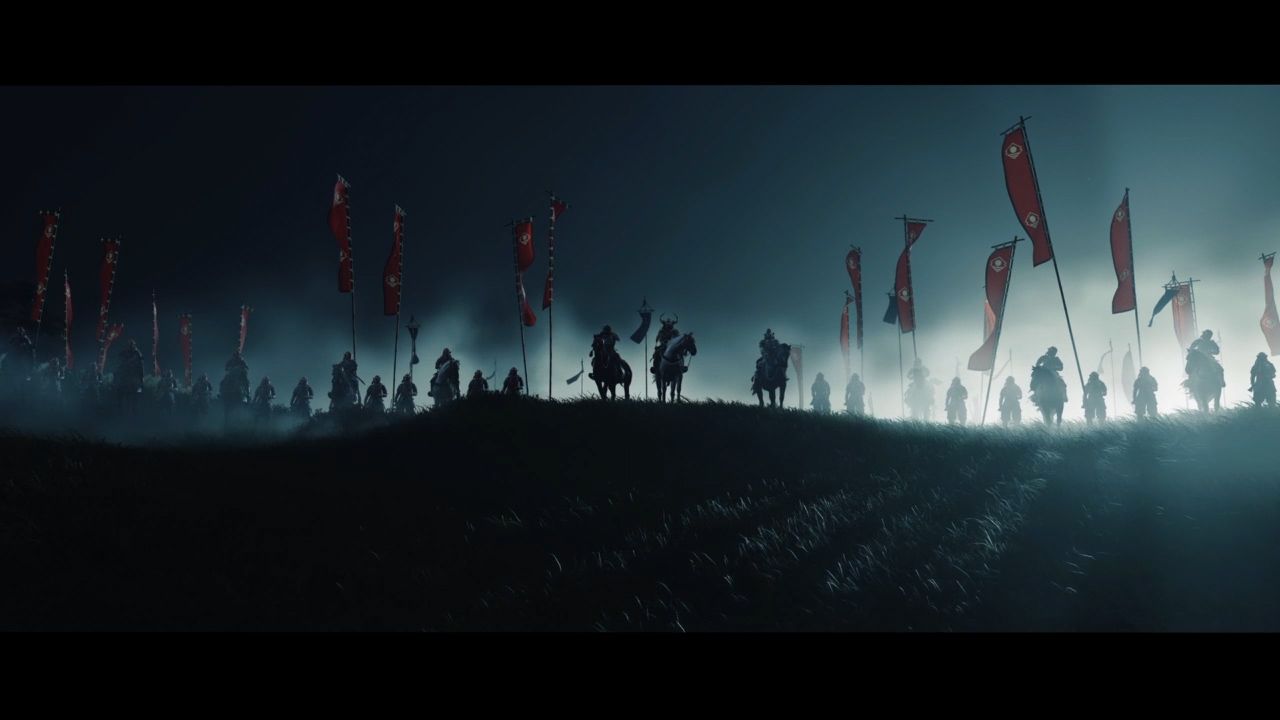
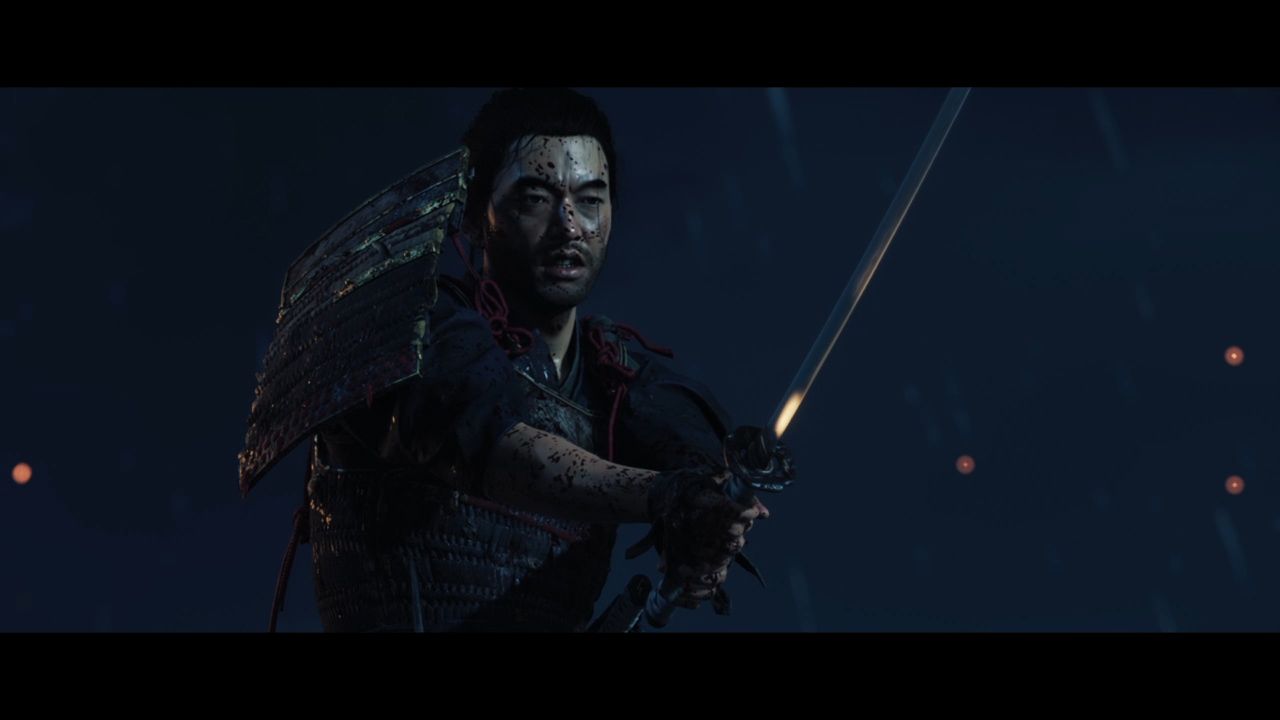
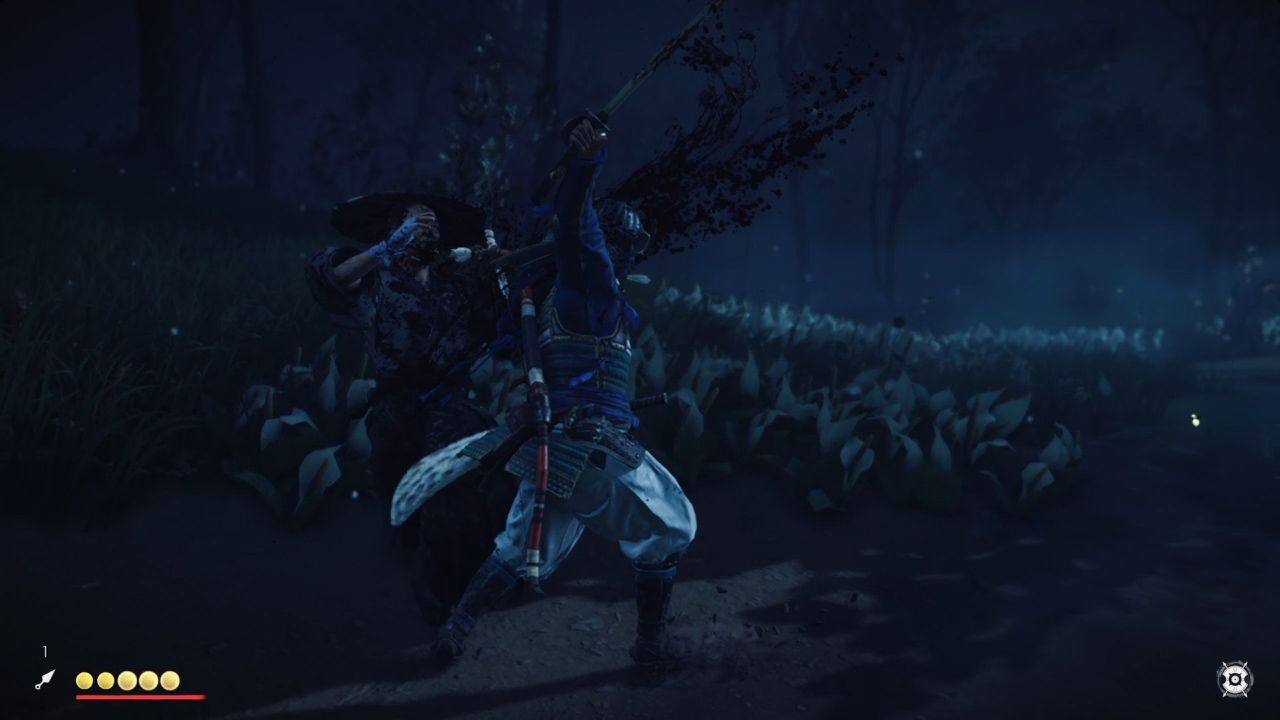

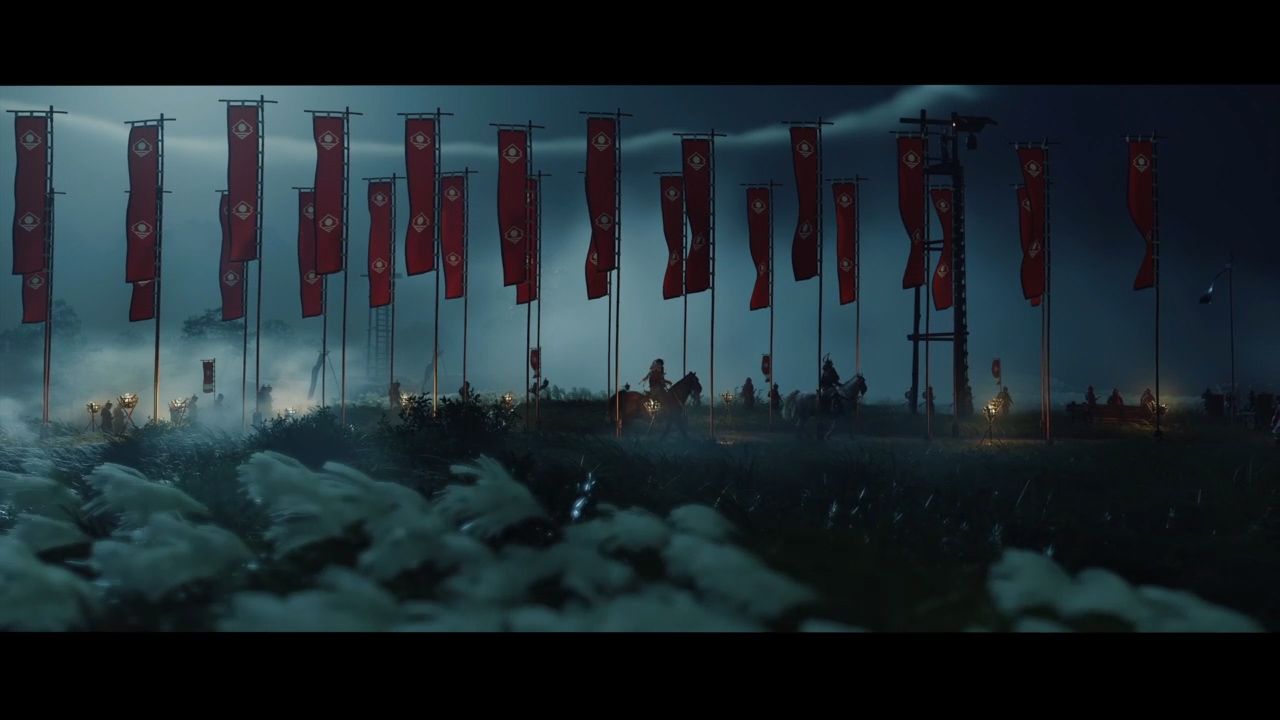
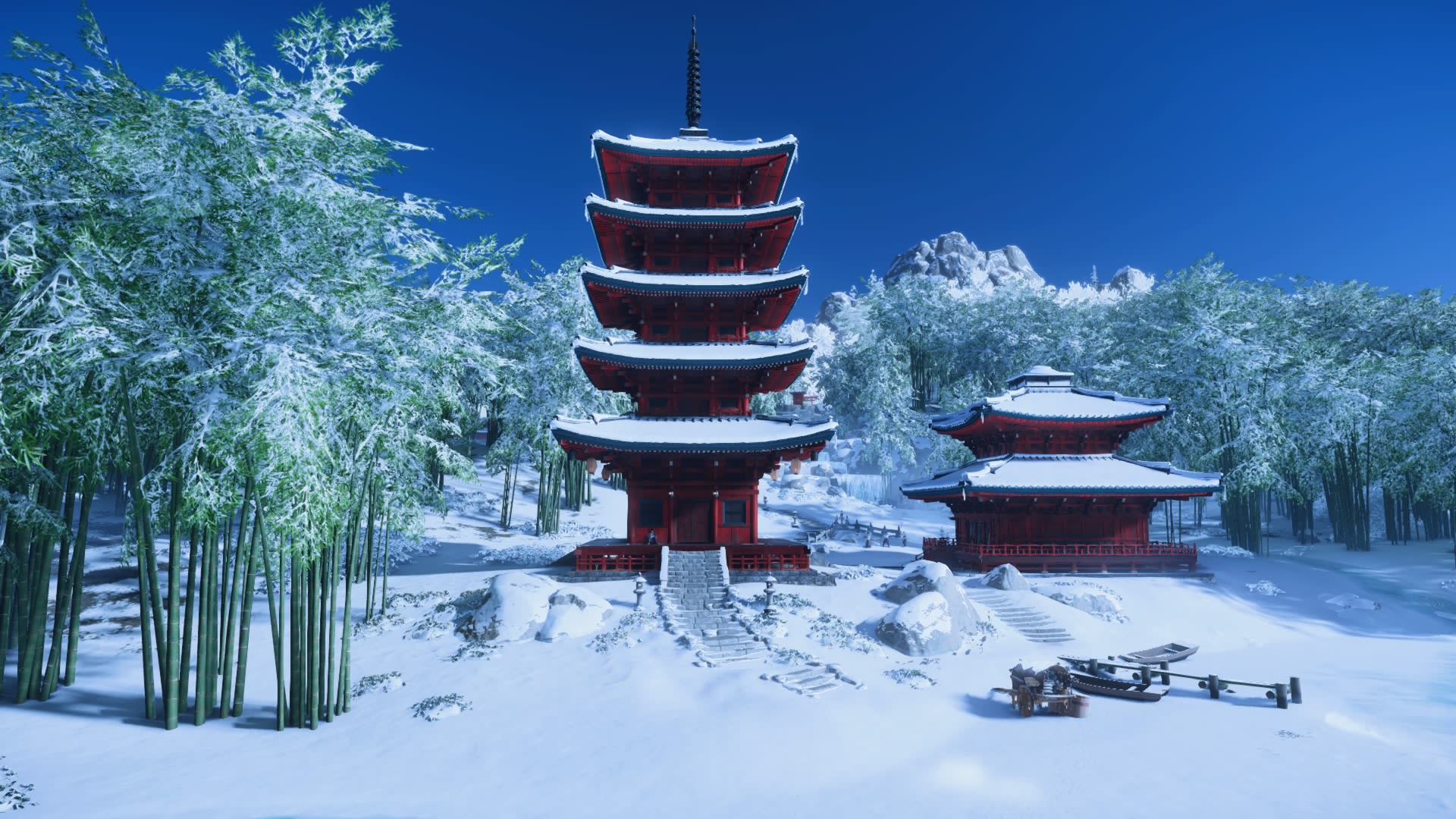
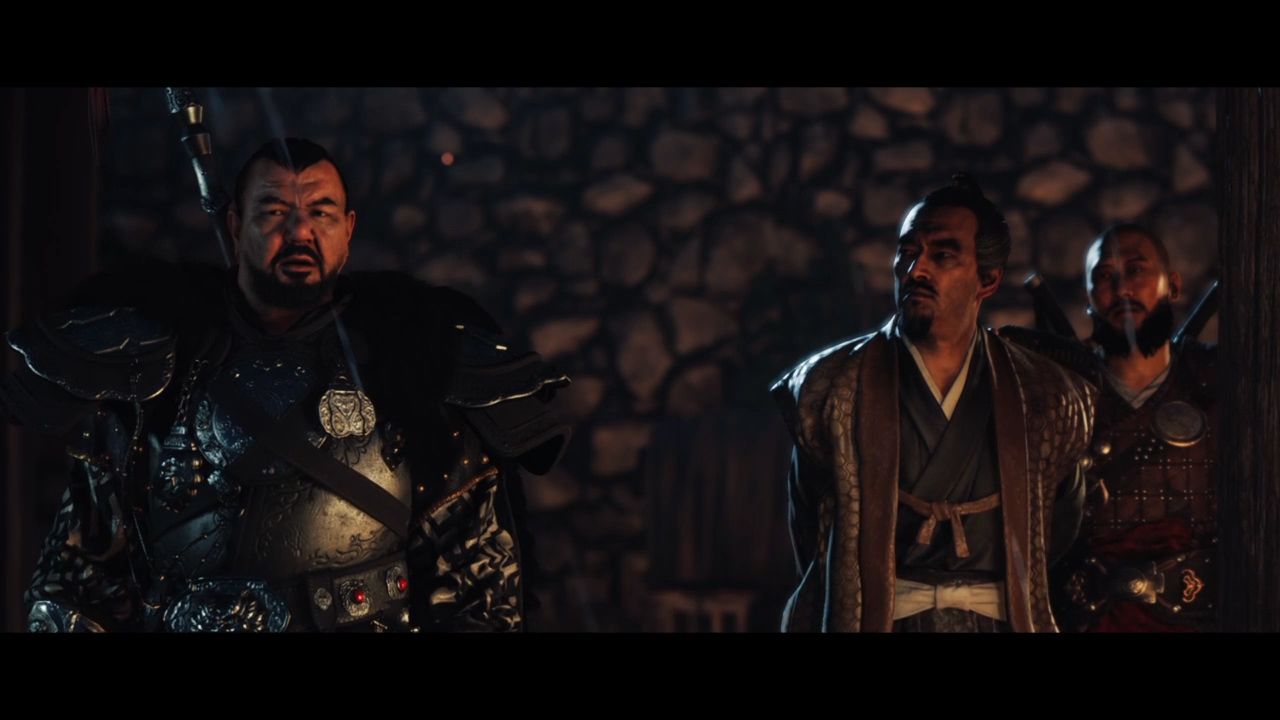
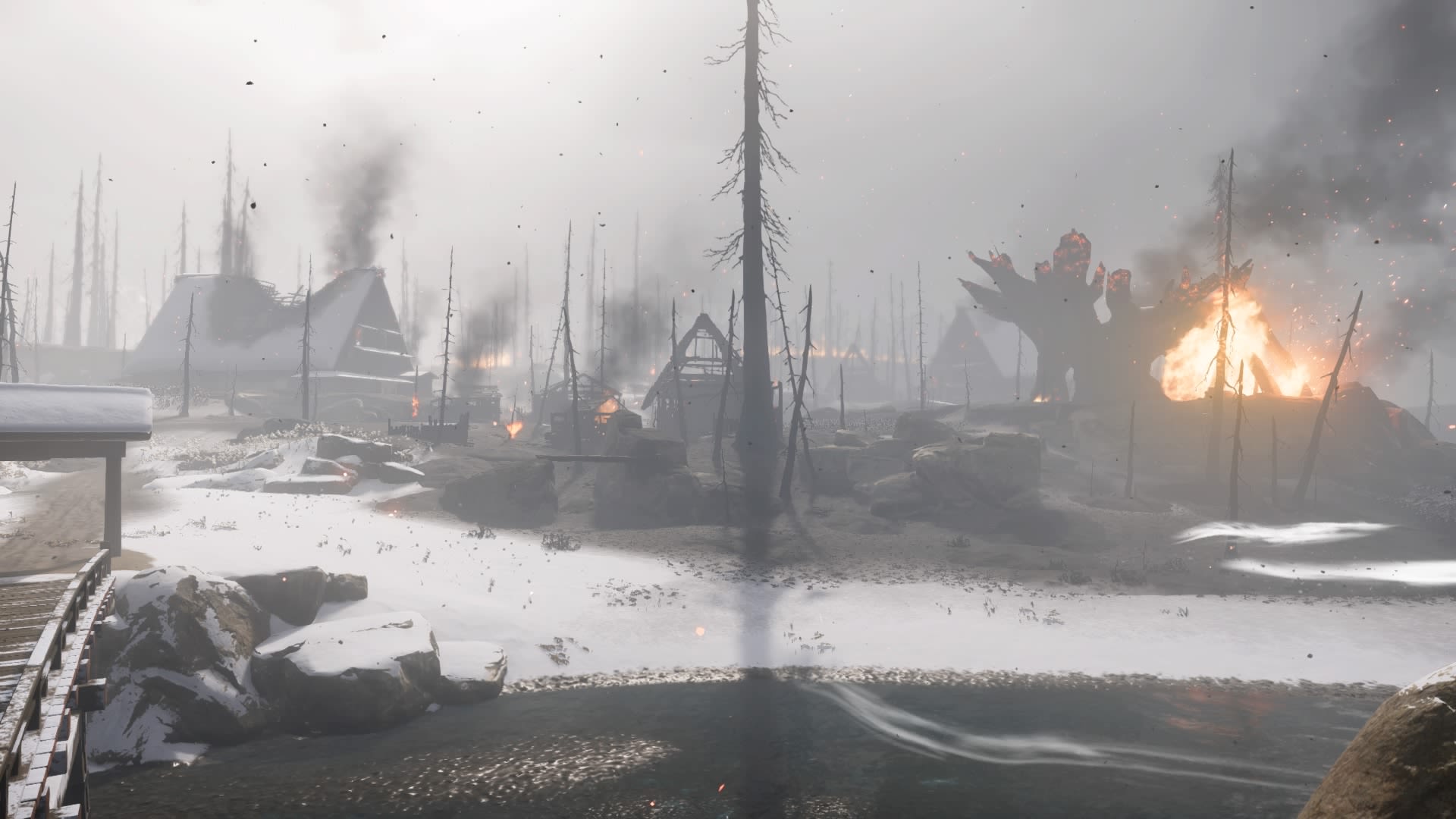
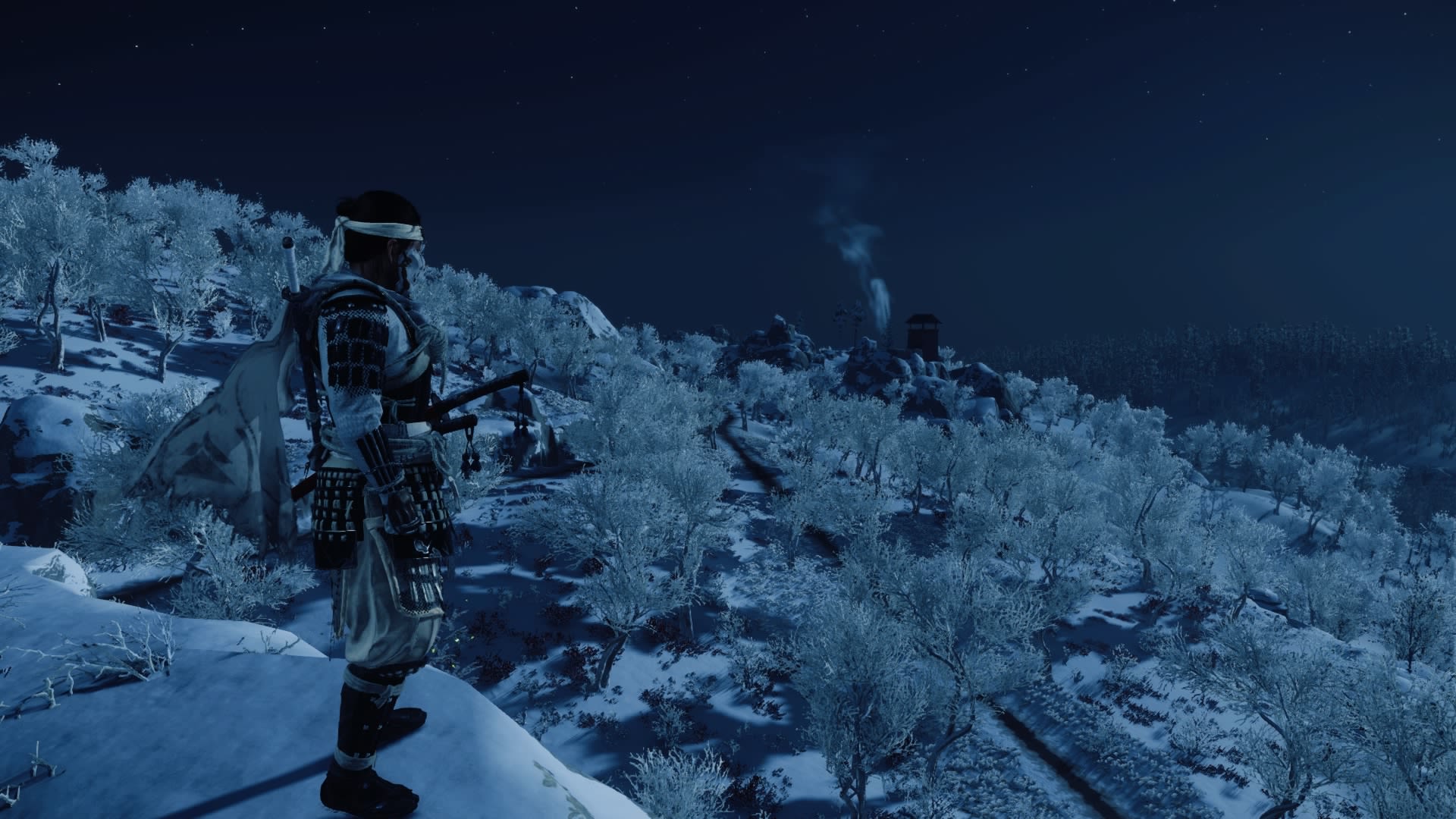





In practice, you can and likely will switch between the two different approaches quite often to achieve your goals, depending on what the situation demands. However, as the plot goes on, Jin’s need to employ stealthy tactics to help him defeat the mongols drives a wedge between him and his uncle, culminating in Jin being exiled (which rather limply equates to not being able to fast travel to the two southernmost regions of Tsushima until you do the next about two missions) by Shimura at the end of the game’s second act, after poisoning a group of mongols to re-take Lord Shimura’s home castle and refusing to blame it on Yuna, the thief who saved him at the beginning of the game and who helped him free Shimura.
Sadly, the conflict between Jin and Shimura, who essentially raised him from a young age following the death of his father, can feel a bit flat at times. As, at various points, the game forces you to employ one of the two approaches in order to accomplish certain tasks, robbing you of some of the agency over Jin’s actions and occasionally making you feel less engaged by the growing hostility between him and Lord Shimura. To me, Ghost of Tsushima seems like a game that might have benefited from having a more branching narrative structure, allowing the player to choose between trying to commit to just one of the play-styles it offers or to run a risk by utilising both and then being shown the unique consequences of their chosen approach, as I imagine that if you go to the effort of dealing with every fight honourably for 95% of the game and then still find yourself exiled by Shimura for one act of deceit that the game gave you no choice over committing, you might be left feeling a bit silly.
This would make the debate the game’s trying to have much easier to get invested in, making the player choose between Jin embracing the identity of the Ghost of Tsushima and using deceptive tactics that will make defeating the mongols and saving the common people of Tsushima easier, but alienate his uncle and the other upper-class samurai or choosing the honourable path of the samurai, keeping them and Shimura on side, but making defeating the mongols harder and possibly leading to a revolt from the peasants of Tsushima, as they grow frustrated with the massive losses of life that the samurai are incurring by trying to do things in their traditional way. This would present you with some big choices to engage with, like you got in Sucker Punch’s Infamous games, rather than being left feeling like your approach to combat has had no real impact on the plot and that things are just going to happen regardless of what you do.
Another gripe and possible plot hole that I encountered during the game came in act three, when the mongols begin to utilise the poison Jin used on them at the end of act two. This is portrayed as something that’s Jin’s fault, despite the fact that none of the mongols would have been able to re-visit the site of his poisoning in order to work out what killed their troops, as Castle Shimura is firmly under samurai control from the end of act two onwards. Either the mongols worked out how to make the poison on their own, or Khotun Khan is psychic. Because of this, it constantly seemed to me like Jin was being blamed for something which clearly can’t be his direct fault, undermining something which becomes a fairly large plot point and reason to kill the Khan at the end of the game.
Aside from this, the game’s main story inspires one more minor gripe from me, that being how the chase with the Khan is elongated throughout the plot. When you re-take the first castle at the end of act one, freeing your uncle, you learn that the Khan has escaped before you arrive, riding north to a different castle. That seemed fine to me, after all, Jin’s main goal at that point was freeing his uncle and he only had a small force at his disposal, but when you assault that second castle at the end of act two, finally conquering it with the poisoning incident I mentioned before, you learn that, once again, your Khan is in another castle and has simply ridden out just before you got there, heading even further north. Could no one have learned from last time and scouted the castle to check the Khan was still in there? Or couldn’t someone have been sent to guard the back gate just before we started the assault? Like I said, it’s a minor thing, but I did end up feeling like the Khan’s goal wasn’t actually to conquer the island, which might involve confronting this rebellion that’s gradually pressing the undo button on all of his conquering, but instead to take a series of short vacations in each of Tsushima’s best castles.

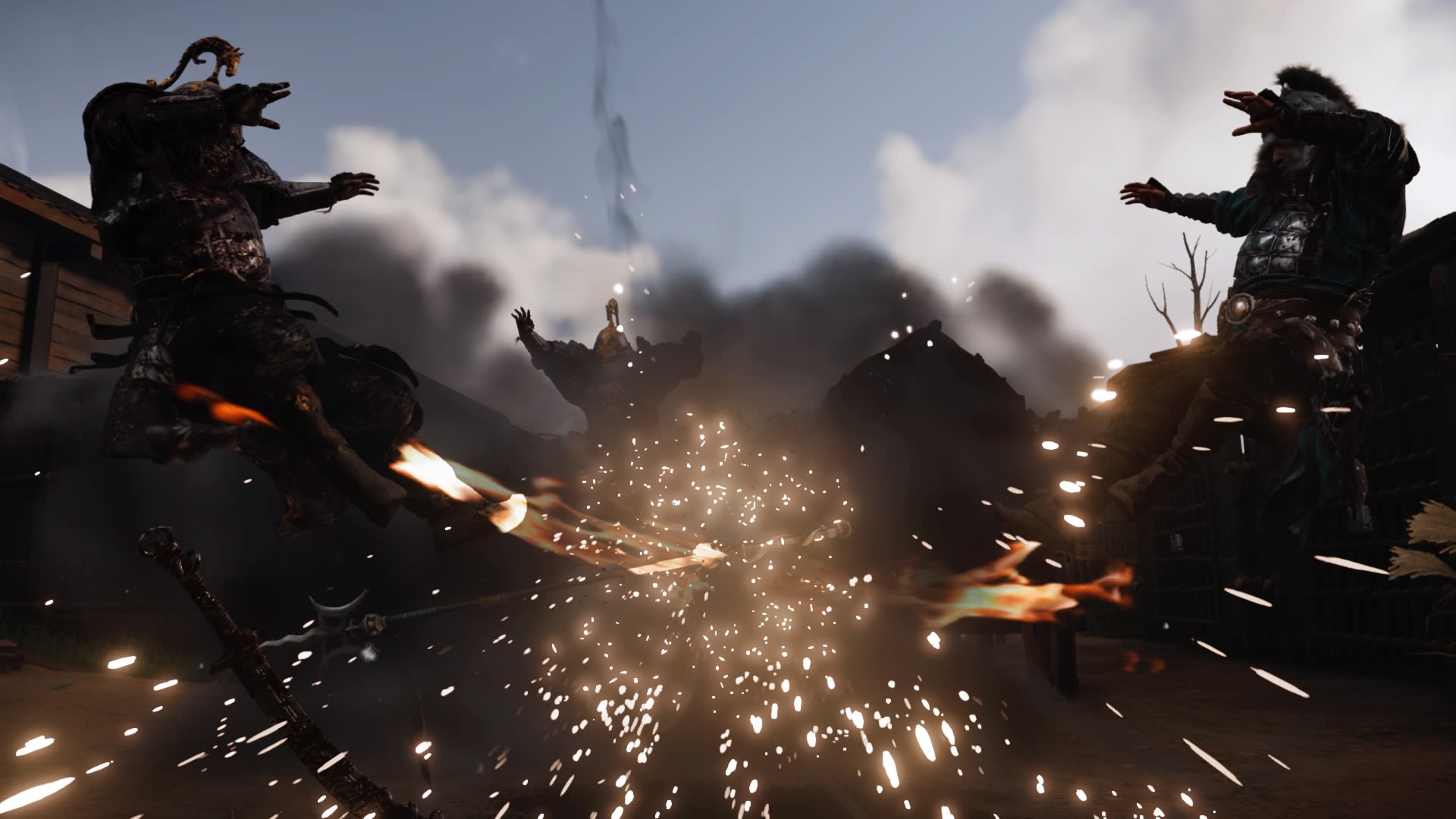
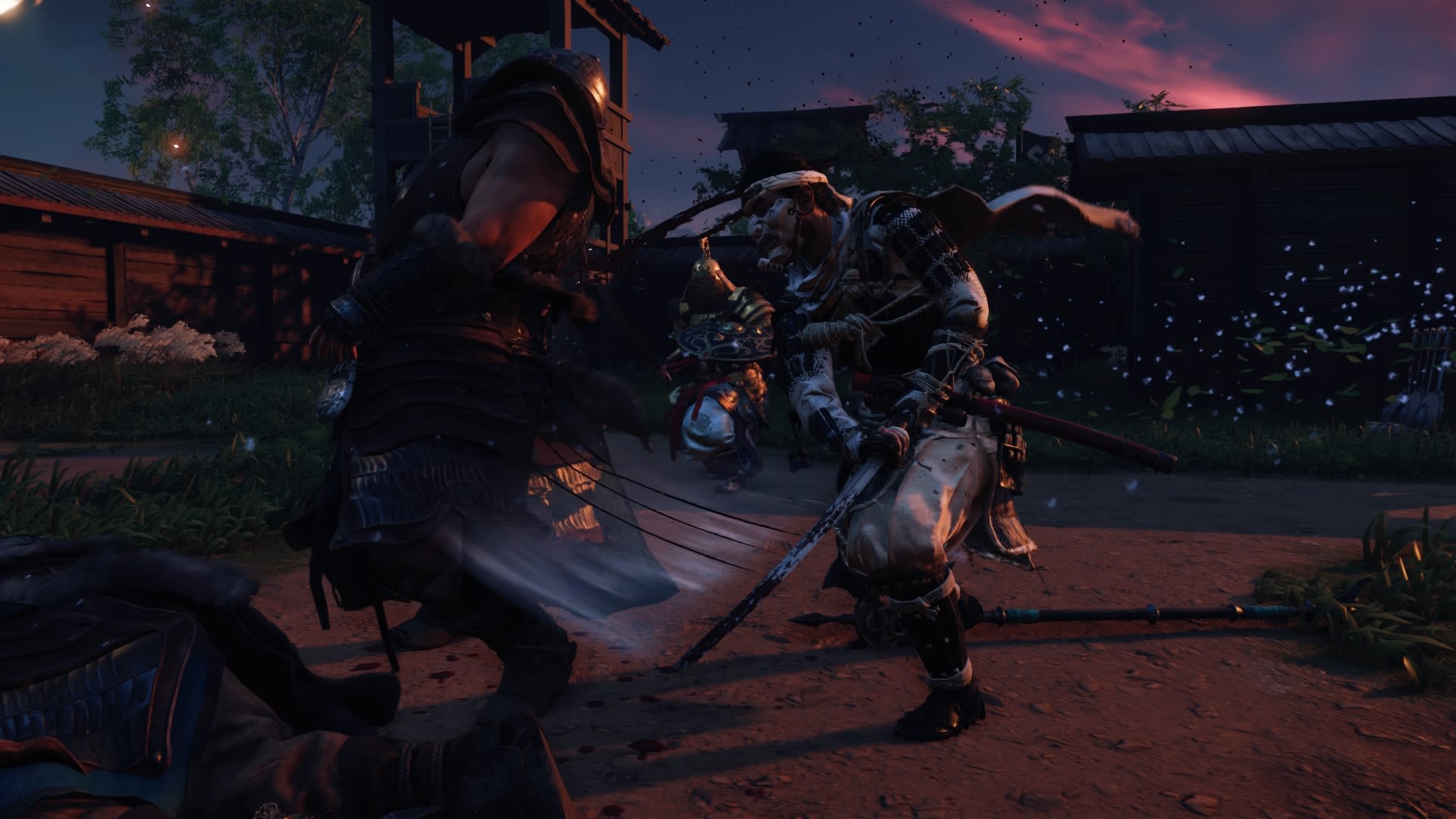

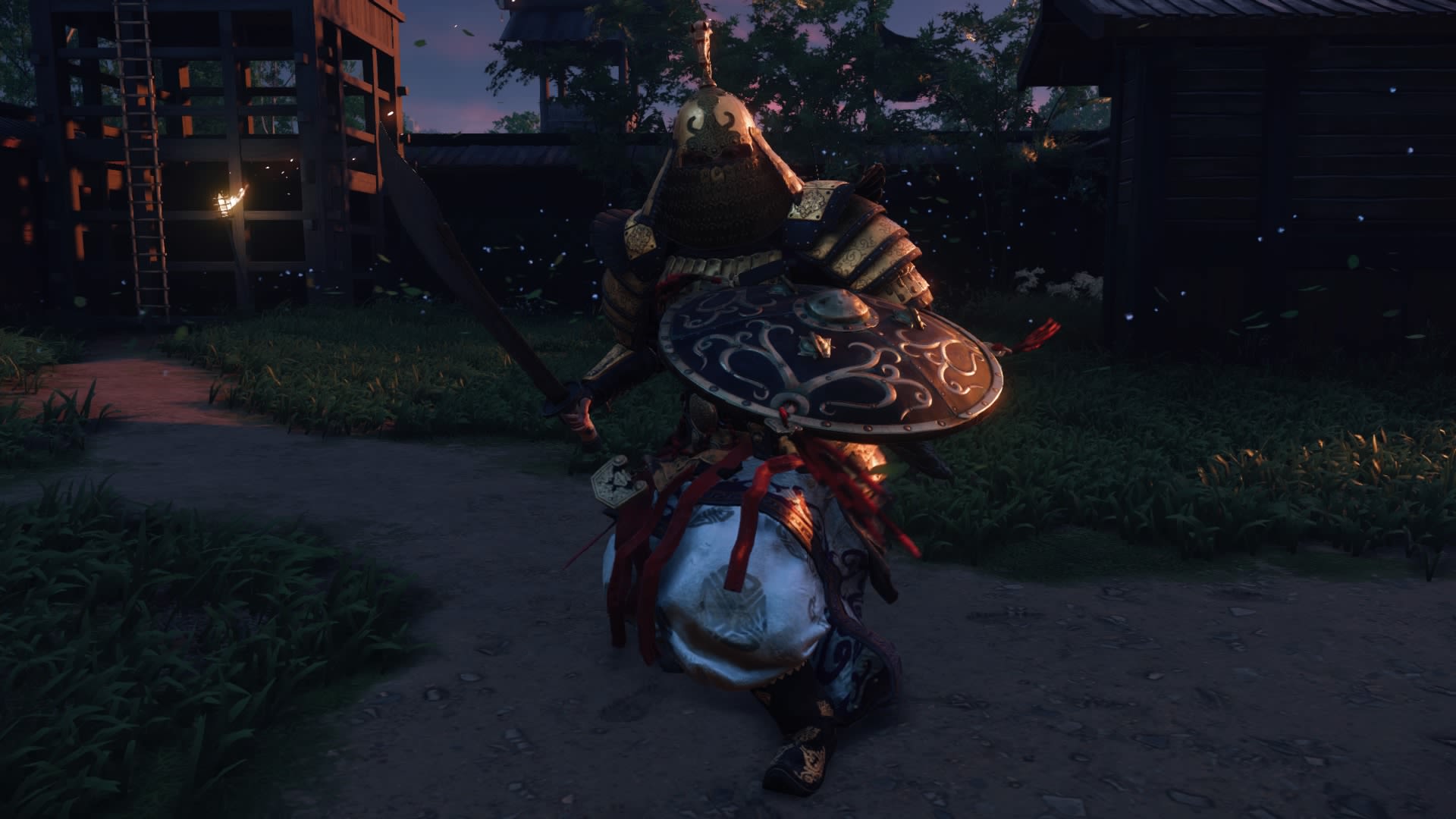
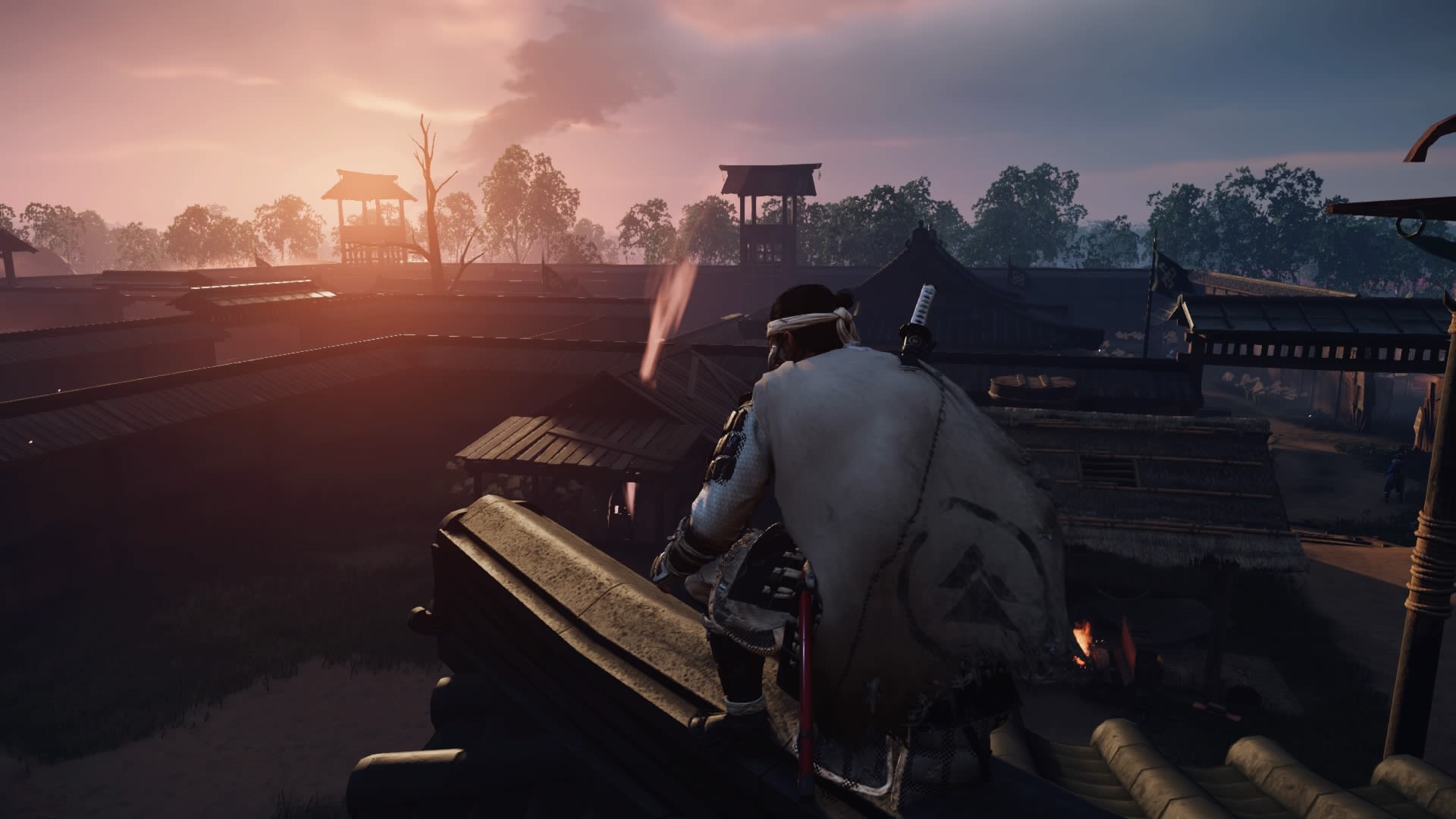
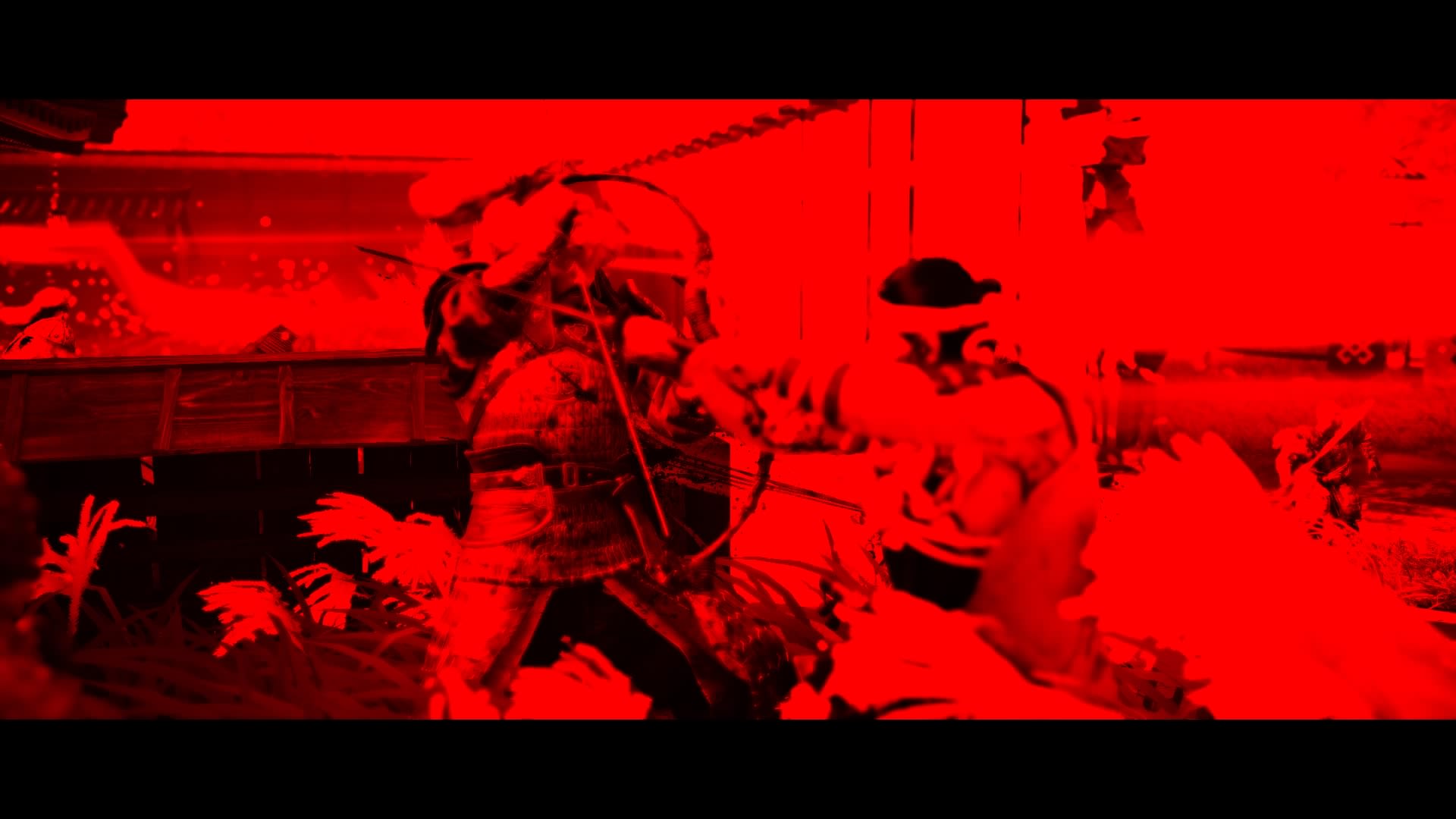






If, at any point, you decide to take a break from your pursuit for the holiday-making Khan, Ghost of Tsushima also offers an array of other activities for you to engage in, that either encourage you to explore the island some more or reward you with a litany of new abilities or items. Of these, I thought the mythical tales were the most enthralling and something not to miss out on if you want the full Ghost of Tsushima experience. These tales take the form of decently lengthy side quests, which are based around Jin hunting down a legendary ability or item based on a series of local myths recounted to him by a musician. Every one of these you hunt down has its own unique and detailed backstory, told through a cut-scene with a series of vibrant illustrations to help bring the tale to life, making the items and abilities themselves seem powerful and worth the effort of pursuing, while also adding some great backstory to the island of Tsushima itself, making it seem more like a living, breathing place with its own customs and stories.
Aside from pursuing these tales, you can also just head into the wilderness at your leisure and find hot springs to meditate in, places to sit and compose haikus and hidden or hard to reach shrines to pray at, all of which offer their own unique bonuses and rewards, though they’re worth doing just to take in more of Tsushima’s beautiful scenery. Also, there are a couple of other mini-games to find, such as the bamboo strikes, which challenge you to press the right buttons at the right time to cut through several lengths of bamboo with your katana. All of these do a great job of feeling like they add something to the game’s world, rather than just being there to give you more generic stuff to do or collect before you reach 100% completion.
Overall, I’d say that, if, like me, you’ve ever enjoyed any of Sucker Punch’s previous work or any open world games for that matter, I’d totally recommend picking up Ghost of Tsushima. Even if its story feels like it could use a few tweaks to take it from good to great, it’s still one that’s worth experiencing for yourself, as it offers some interesting characters and themes. However, I think this is a game that, above all, will come to be defined by and beloved for its beautiful and diverse world, which offers endless hours of engaging exploration, almost on the same level as games like The Witcher 3 or RDR2.
Indeed, it’s this that I think could make Ghost of Tsushima a dark horse in the race for 2020’s game of the year award. So, if you’re looking for a beautiful new game and world to escape into as the summer of the unending pandemic rumbles on, don’t bother being as cautious as I was and pick up Ghost of Tsushima today.
